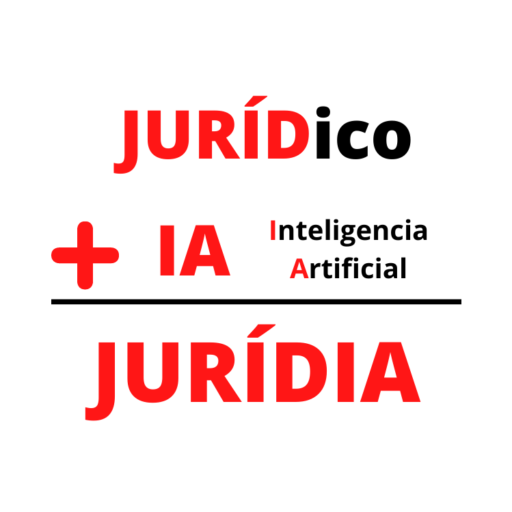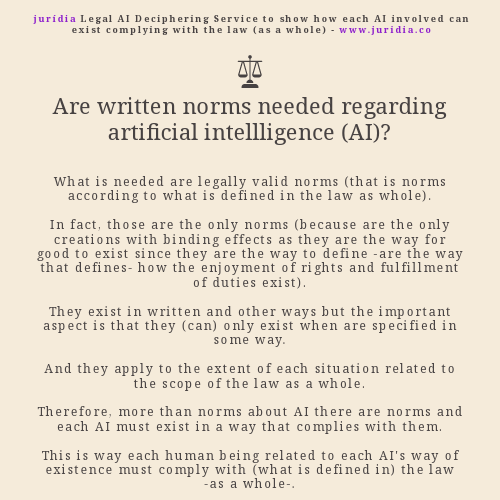The law as a whole includes the norms (and, properly, it is a norm, the whole of the norm, -created by the result of the union of its elements-).
That is why the solution is to know the foundations of law (legal foundations) and to apply them to the extent of each AI.
Note: the law (as a whole) does not mean a specific local law, but the law as a whole (law -the field called: law). This is why it is determinant to know the jurisprudence (that is the philosophy of law -not points of view about the law-, understood, as a whole) and to apply its foundations to the extent of -that is tailored to- each artificial intelligence (AI) case/project/creation/phenomenon/situation.
This is precisely why we clarify/decipher (what is defined in) the law as a whole to the extent of each AI involved. To show how rights and duties can be effective regarding the AI involved. Clarifying that it is not about just theory or practice without diligent foundations but about (AI) effectiveness obtained through the coincidence of the practice/facts -related to the AI involved- with the legal must-be (foundations of law -that is, what is defined in the law, as a whole-).
Kind regards, jurídia (www.juridia.co):

